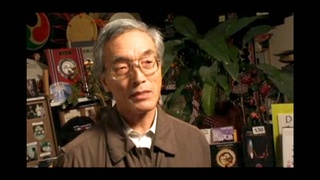Interviews
Immersed in Japanese culture and language
My older brothers and sister, they also liked the culture. They would buy magazines, records, they would enjoy listening, and at the same time, I would look at the magazine and enjoy listening to music. They were showing Japanese movie two different places in San Francisco, and I'd go every Friday and Saturday. One Friday I'll go this theater, Saturday I'm going to go to the other theater. It was very much Japanese-y, more than being American. Because my father and mother at home would speak Japanese. My father said, "You have a Japanese face? You learn to speak Japanese." Still up here in my mind.
Date: September 20, 2019
Location: California, US
Interviewer: Tom Ikeda and Yoko Nishimura
Contributed by: Watase Media Arts Center, Japanese American National Museum and Denshō: The Japanese American Legacy Project.
Explore More Videos

Takayo Fischer on Her First Time Expressing Outward Affection to Her Parents
(b. 1932) Nisei American stage, film, and TV actress

Adjustment to American life
(b. 1938) Japanese American. Hiroshima atomic bomb survivor

Identification as Colombian, feeling closer to JA than Japanese
(b.1974) Japanese Colombian who currently resides in the United States

Kids activities in Crystal City
(b. 1938) Japanese Peruvian incarcerated in Crystal City

Influence of Mexican culture after returning from camp
(b. 1943) Japanese American transgender attorney

Acculturation
(b.1964) California-born business woman in Japan. A successor of her late grandmother, who started a beauty business in Japan.

The performing arts not for Nisei
Senshin Buddhist Temple minister and co-founder of Kinnara Taiko.

Japanese are more accustomed to foreigners
(b.1964) California-born business woman in Japan. A successor of her late grandmother, who started a beauty business in Japan.

Food growing up
(b.1948) Nikkei from Southern California living in Japan.

Understanding Sansei taiko (Japanese)
(b.1943) Shin-issei grand master of taiko; founded San Francisco Taiko Dojo in 1968.

Rediscovery of Japanese culture through taiko (Japanese)
Shishimai (Lion dance) and Taiko player with San Francisco Taiko Dojo.

Teaching at the military language school during World War II
(b. 1924) Political scientist, educator, and administrator from Hawai`i

Learning English upon discovering that family could not return to Peru
(1930-2018) Nisei born in Peru. Taken to the United States during WWII.

Japanese American community life
(b. 1939) Japanese American painter, printmaker & professor

Starting over after the war: denial of all things Japanese
(b. 1923) Nisei from Washington. Resisted draft during WWII.
